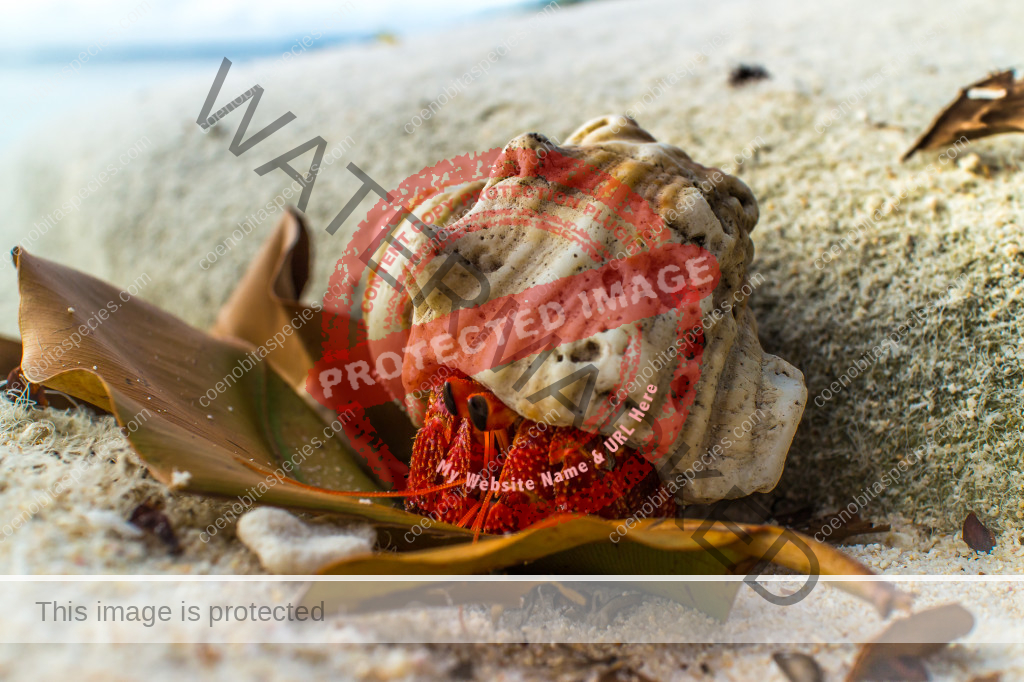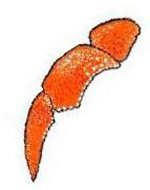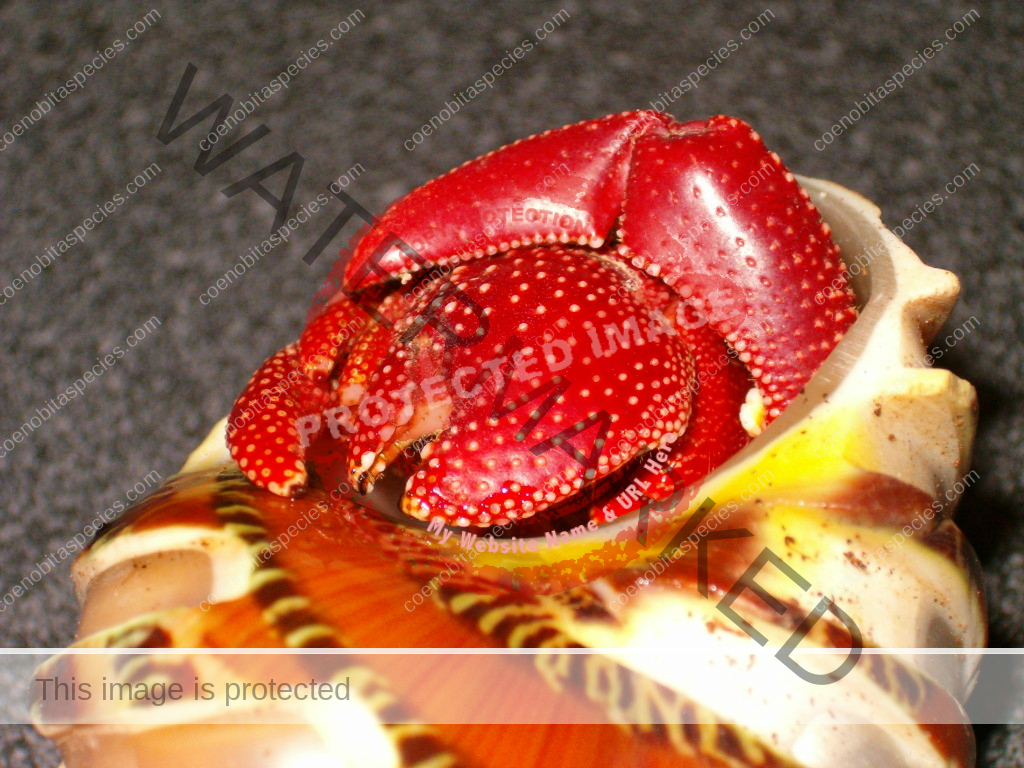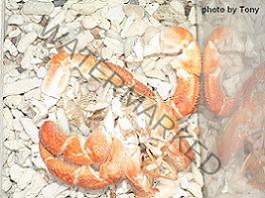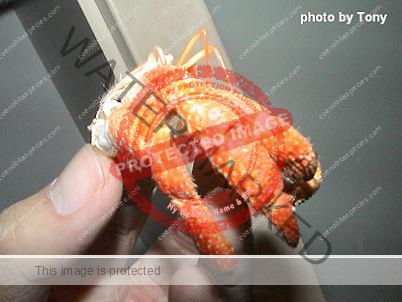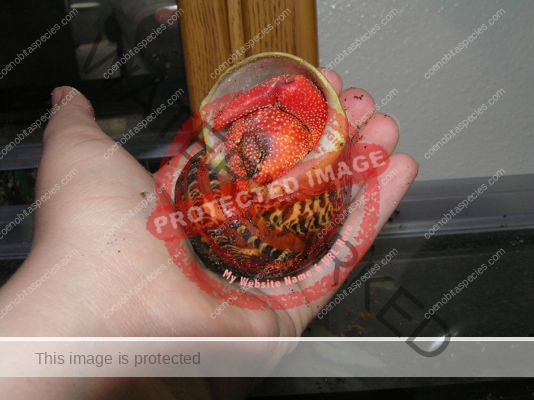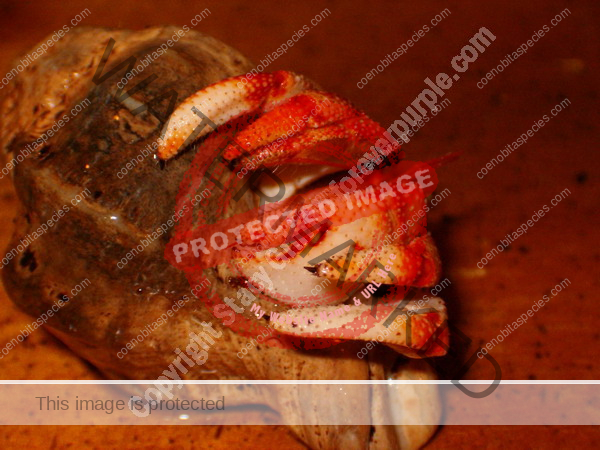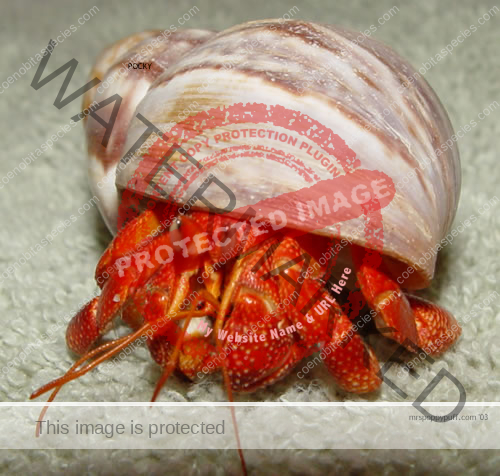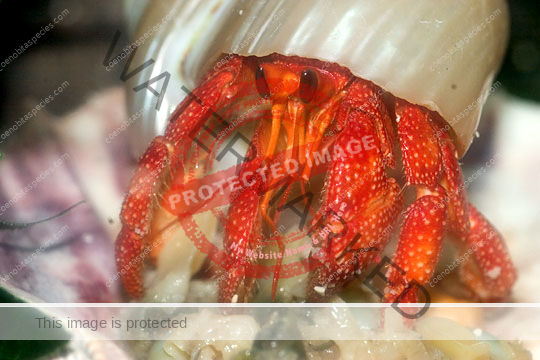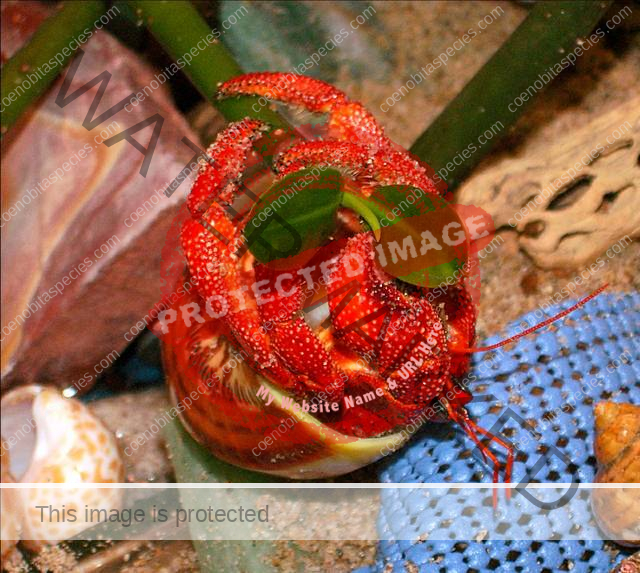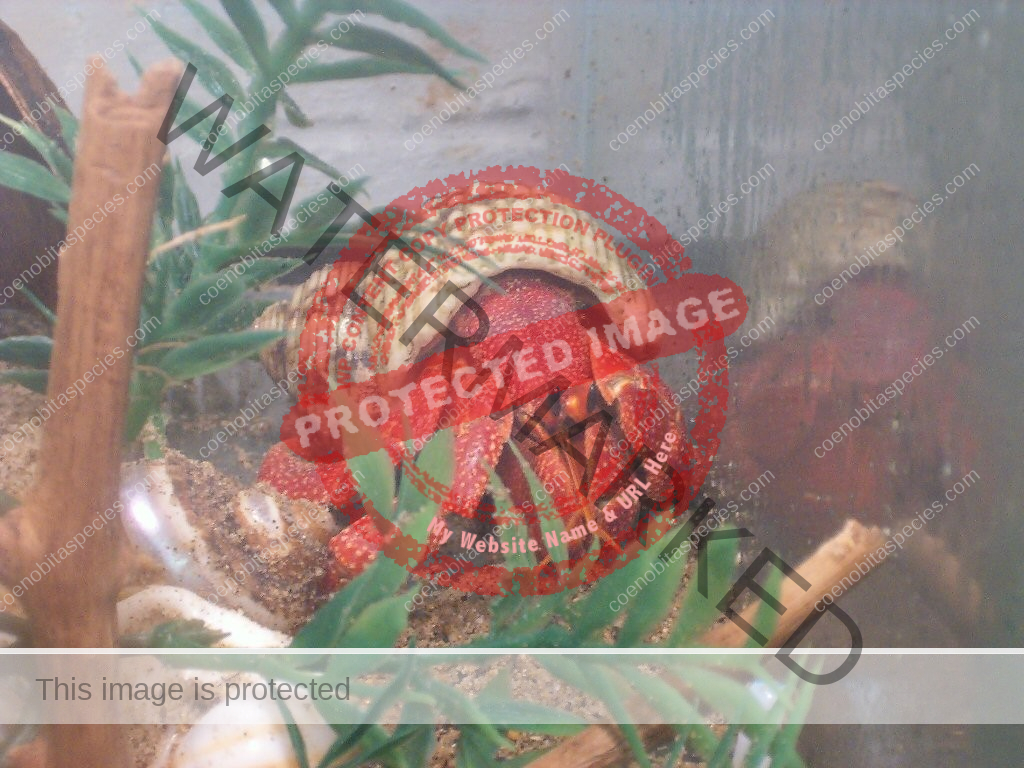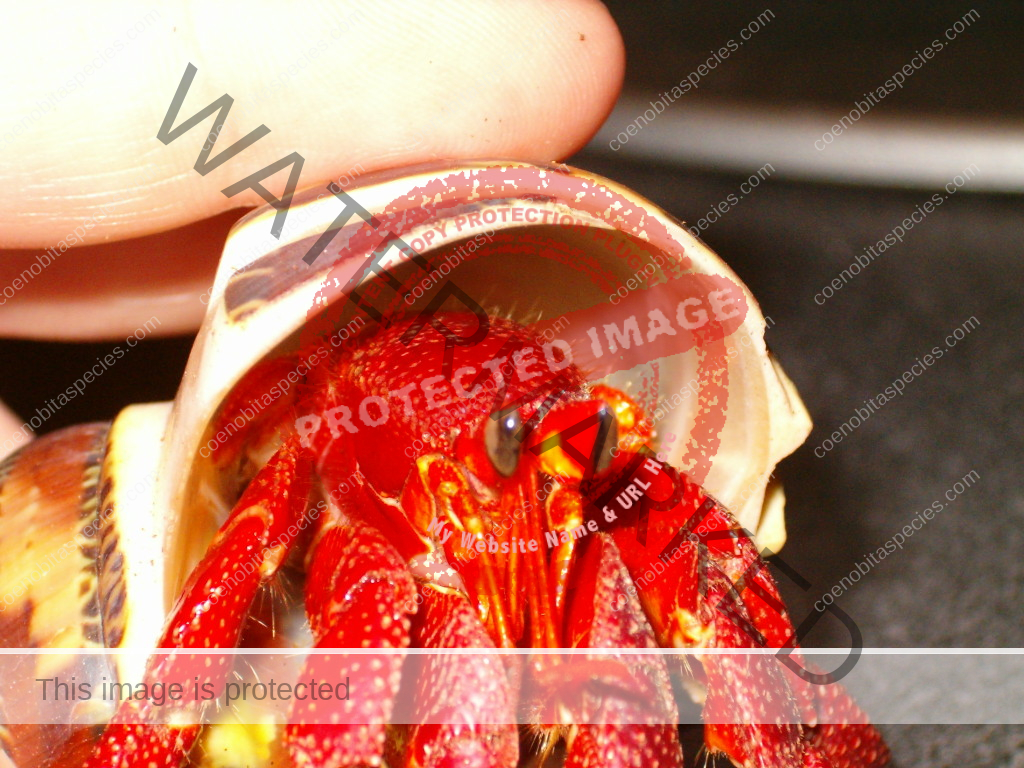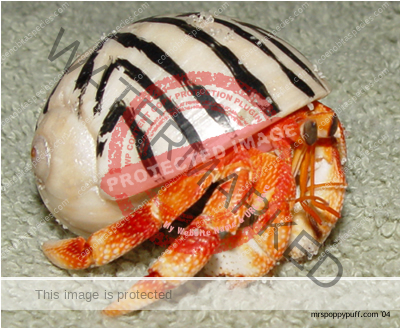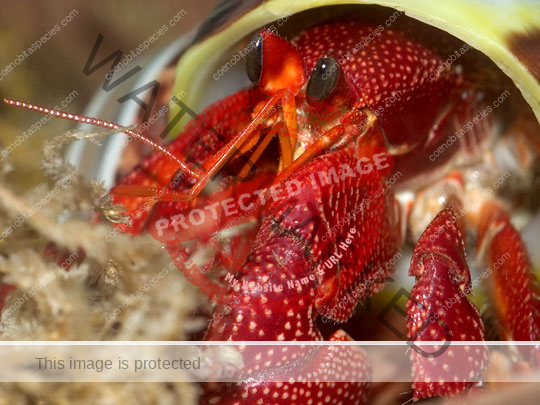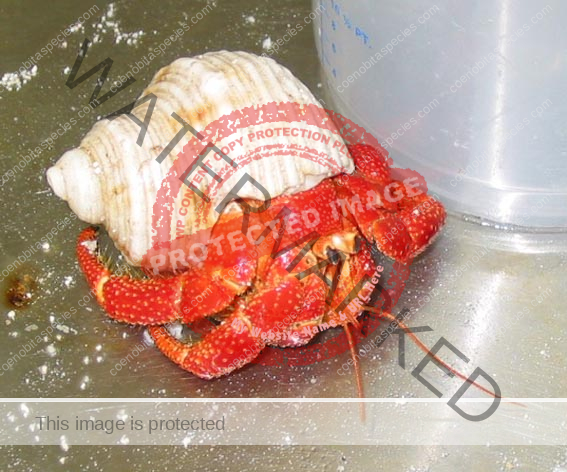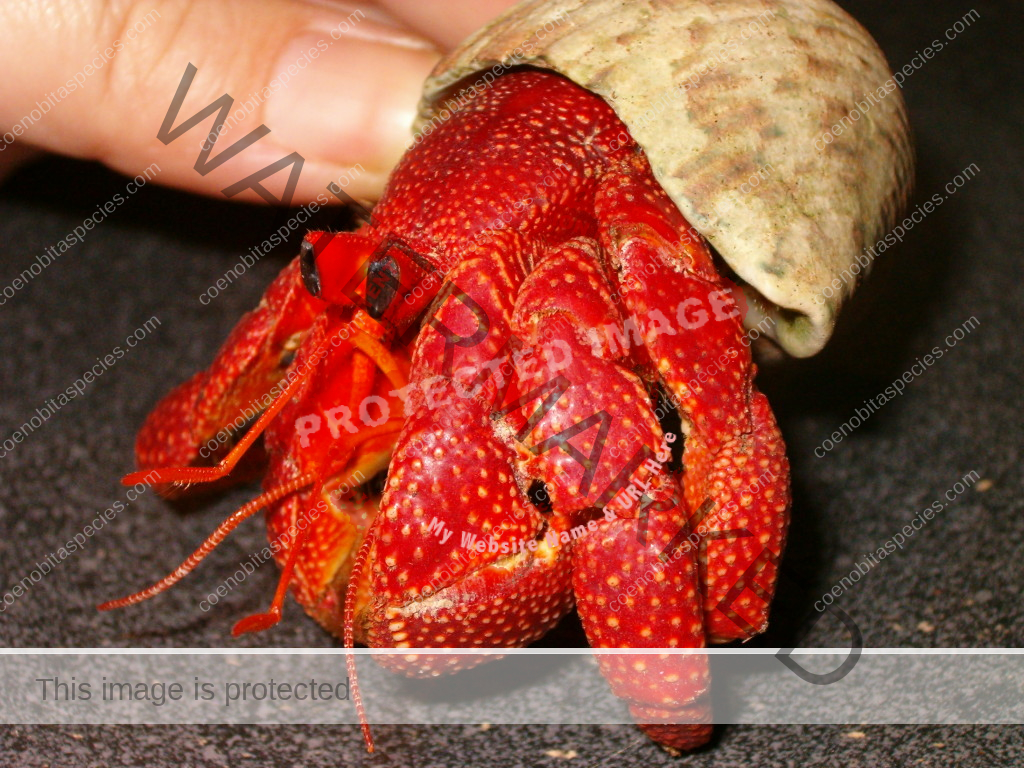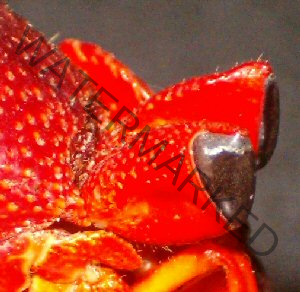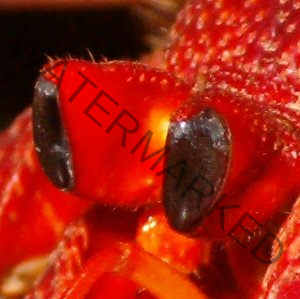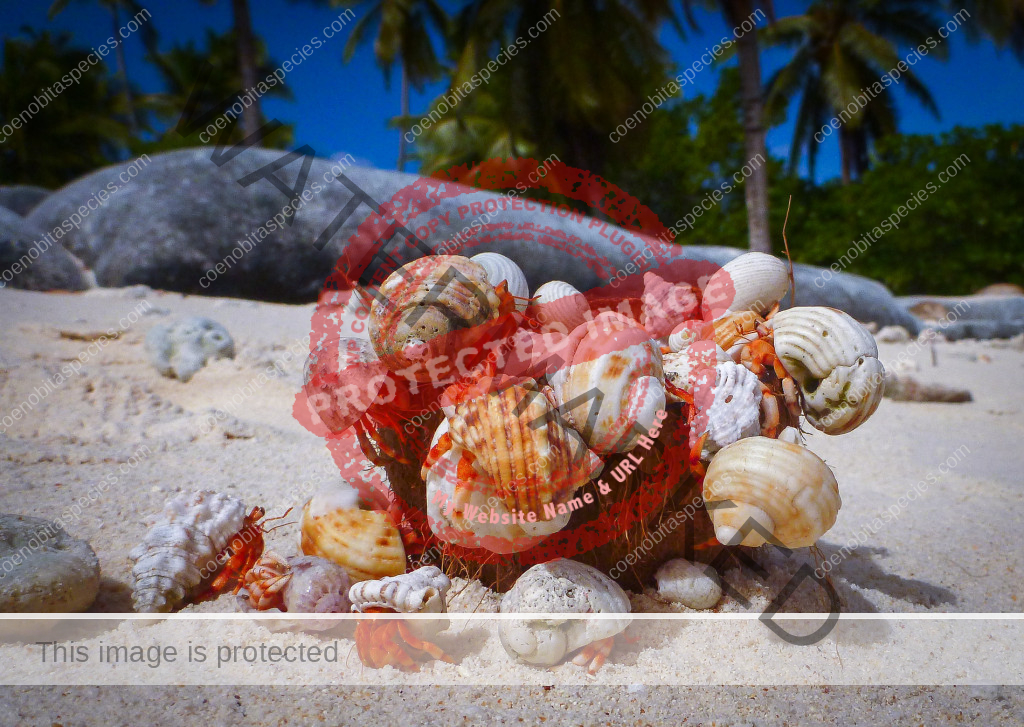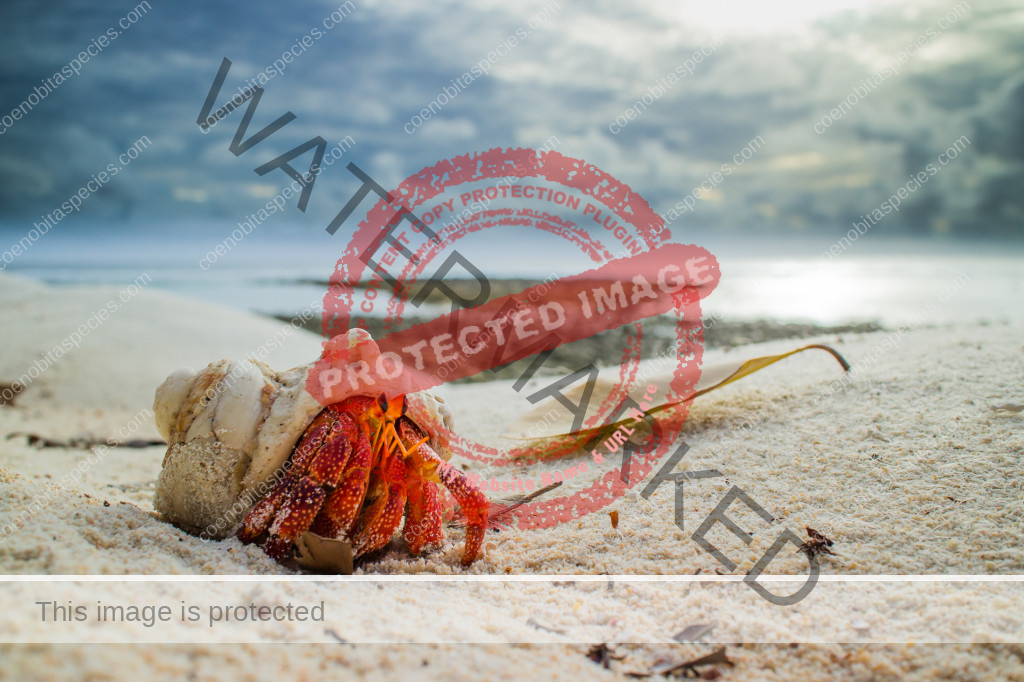
Common name: Strawberry, Straw
Latin Origins: perlatus: from the word perfero, perfero: 1. vt. carry through, bring, convey; 2. bear, endure, put up with
Distribution: Australian Region-Australia: Christmas Island (Indian Ocean), Cocos (Keeling) Islands, Coral Sea Islands Territory, Queensland (Great Barrier Reef)
NE Herald Cay; Indo-west Pacific Oceans, Japan Bonin Islands, Kuroshima Island [1] , In South Pacific: GBR, Chesterfield, Loyalty Is, Vanuatu, Solomon Is, W&F, Fiji, Samoa, Cook Is, French Polynesia (Austral, Society, Marquesas, Tuamotu, Gambier Is). [6] Guam
C. perlatus are native to the Indo-Pacific region from the Islands of Aldabra, Mauritius and Seychelles through Samoa, specifically Madagascar, Japan, Australia and in other areas around the Red Sea and the Pacific.
In Australia they are restricted to islands and coral cays of the Great Barrier Reef where they have been found to scavenge on sea terns, tortoise eggs and other crabs.
Habitat: Offshore islands, commonly found in turban shells, shelters under logs and litter during day; in tidal pools, sandy areas, and humid areas with dune vegetation. They are most active at a relative humidity of about 80% and a temperature of about 80°F (27°C). Coenobita perlatus are more dependent on the sea as they require regular access to sea water or water of high salinity. They are never far from shore or adjacent dunes, and have been found in tidal pools, sandy areas, and humid areas with dune vegetation. [4]
Ecology: Nocturnal, supratidal, terrestrial (desert or dune, forest, scrub forest), coastal. C. perlatus is an efficient scavenger, to the extent that the low numbers of carrion-breeding flies on many islands have been attributed to the presence of C. perlatus.[2] It has also been observed to use its claws to pinch the live flesh from the invasive land snail Achatina fulica.[3]
Larval Stages: five larval stages
Characteristics: Coenobita perlatus have pronounced striations (stitch marks) on their large pincer (about 4-7 of them). They are noted for their bright red colouring and white granual markings. The red coloring extends to their eye stalks and thoracic appendages. They have large, hair like pleopods. Antennaly acicle fused with second segment of peduncle; eyestalks strongly compress laterally; brush of setae on inner surface of both chelae. Propodus of left 3rd peropod with outer surface convex. [5] Rostrum absent. [6]
Body mass 80g [4], Carapace 10-25mm, length total 80-120mm [6]
Common identifiers:
Eyes – elongated, red stalks
Large claw – stitch marks, white granules
Coloring – white/orange as juvenile, red as adult with white granules on legs
Chirps – yes
Behavior: Reproduction occurs while both individuals are in intermolt (hard shelled stage), often in or near the burrows of males, or on land near the sea. Male C. perlatus place a spermatophore on the female (externally) which is then dissolved by secretions as the eggs are release. The eggs (about 10,000- 50,000 per fertilizaiton) are attached to the pleopods on the female’s abcomen and remain there for some time. [4]
Diet: scavenger [4]
Preferred shells: juveniles use a wide variety, adults almost always choosa Turbo setosus [6]
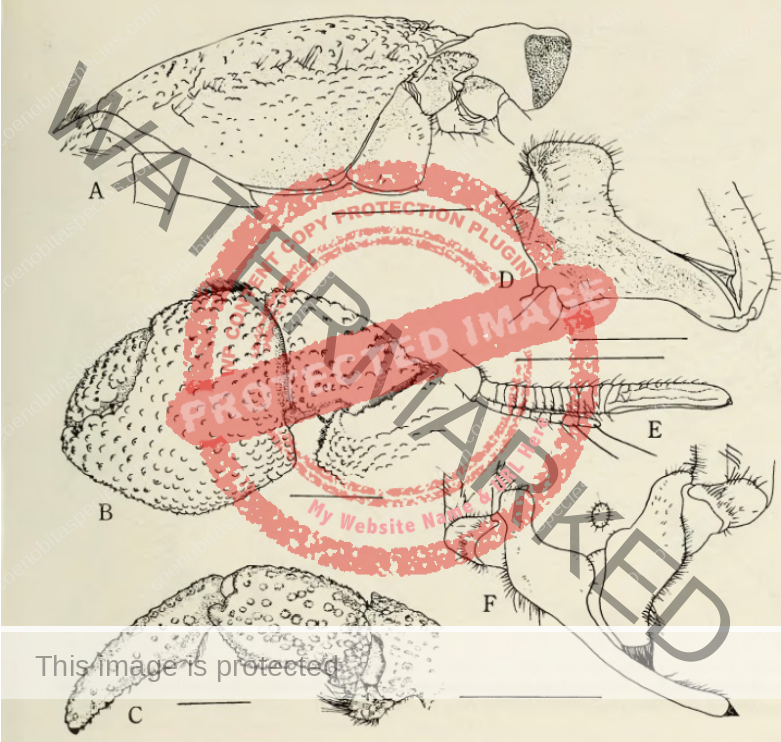

C. perlatus on Instagram
[insta-gallery id=”5″]
Photo credits:
Glen R
bird1234 youtube
Mrs PoppyPuff
Stacy Griffith
References:
1. Land hermit crabs from the Ryukyus, Japan, with a description of a new species from the Phillippines by Yukio Nakasone
Forest, J. (1956). La faune des Iles Cocos-Keelings Paguridea. Bull. Raffles Mus. Singapore 27(6): 45-55[53], University of Michigan Museum of Zoology Animal Diversity Web Noelle McKenzie 1999
2. Joseph C. Britton & Brian Morton (1993). “Are there obligate marine scavengers?”. In Brian Morton. The marine biology of the South China Sea: proceedings of the First International Conference on the Marine Biology of Hong Kong and the South China Sea, Hong Kong, 28 October-3 November 1990, Volume 2. Hong Kong University Press. pp. 357–392. ISBN 978-962-209-355-3.
3. P. D. Srivastava (1992). Problem of land snail pests in agriculture: a study of the giant African snail. Concept Publishing Company. p. 168. ISBN 978-81-7022-435-8.
4. Hazlett 1998, Veltman 1997, Biology of the Land Crabs 1st Edition by Warren W. Burggren, Brian R. McMahon 1988
5. Coastal hermit crabs from Kenya, with a review and key to east African species by P. J. Reay and Janet Haig
6. A guide to the decapod crustaceans of the South Pacific by Joseph Poupin, Matthieu Juncker
